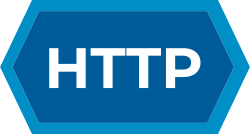HTTP Live Streaming (also known as HLS) is an HTTP-based adaptive bitrate streaming communications protocol developed by Apple Inc. and released in 2009...
44 KB (2,804 words) - 15:31, 22 April 2025
technologies utilized streaming protocols such as RTP with RTSP, today's adaptive streaming technologies are based almost exclusively on HTTP, and are designed...
35 KB (3,863 words) - 10:11, 6 April 2025
Adaptive Streaming over HTTP (DASH), also known as MPEG-DASH, is an adaptive bitrate streaming technique that enables high quality streaming of media...
30 KB (2,562 words) - 18:06, 2 July 2025
Push technology (redirect from HTTP streaming)
HTTP server push (also known as HTTP streaming) is a mechanism for sending unsolicited (asynchronous) data from a web server to a web browser. HTTP server...
21 KB (2,446 words) - 11:22, 14 July 2025
HTTP (Hypertext Transfer Protocol) is an application layer protocol in the Internet protocol suite model for distributed, collaborative, hypermedia information...
61 KB (7,794 words) - 11:04, 23 June 2025
Engine: Multi-format streaming server for RTSP/RTP, RTMP, MPEG-TS, ICY, HTTP (HTTP Live Streaming, HTTP Dynamic Streaming, Smooth Streaming, MPEG-DASH), WebRTC...
23 KB (2,939 words) - 16:46, 13 June 2025
industry-standard HTTP streaming or HTTP progressive download protocols. With HTTP streaming, the de facto standard is to use adaptive streaming where multiple...
17 KB (2,023 words) - 00:52, 15 July 2025
Hypertext Transfer Protocol (HTTP) response status codes are issued by a server in response to a client's request made to the server. It includes codes...
45 KB (5,590 words) - 07:51, 16 July 2025
during pipelined HTTP operation. This is a serious problem when Content-Length cannot be used due to streaming. To solve this problem, HTTP 1.1 introduced...
11 KB (1,188 words) - 04:38, 26 May 2025
transmission. HTTP/2 no longer supports HTTP/1.1's chunked transfer encoding mechanism, as it provides its own, more efficient, mechanisms for data streaming. SPDY...
39 KB (3,804 words) - 00:48, 10 July 2025
content. Streaming is more commonly used for video on demand, streaming television, and music streaming services over the Internet. While streaming is most...
89 KB (9,693 words) - 08:21, 16 July 2025
the widely deployed HTTP/1.1 and HTTP/2. Unlike previous versions which relied on the well-established TCP (published in 1974), HTTP/3 uses QUIC (officially...
19 KB (1,588 words) - 03:09, 22 May 2025
proxy server continues to proxy the TCP stream to and from the client. Only the initial connection request is HTTP - after that, the server simply proxies...
5 KB (596 words) - 14:57, 1 February 2025
Chunked transfer encoding (redirect from HTTP Chunking)
Chunked transfer encoding is a streaming data transfer mechanism available in Hypertext Transfer Protocol (HTTP) version 1.1, defined in RFC 9112 §7.1...
7 KB (971 words) - 14:30, 19 June 2024
Comet (programming) (section Streaming)
Practices for the Use of Long Polling and Streaming in Bidirectional HTTP" compares long polling and HTTP streaming. Specific technologies for accomplishing...
24 KB (2,651 words) - 04:05, 24 June 2025
message updates or continuous data streams to a browser client and designed to enhance native, cross-browser streaming through a JavaScript API called EventSource...
4 KB (368 words) - 20:03, 31 May 2025
Live Streaming (HLS), and Adobe, in 2010, HTTP Dynamic Streaming (HDS). In addition, HTTP-based adaptive streaming was chosen for important streaming events...
65 KB (6,168 words) - 23:11, 15 July 2025
Helix Universal Server (category Streaming software)
first[citation needed] streaming media server originally developed by Progressive Networks in 1994. It supported a variety of streaming media delivery transports...
10 KB (1,271 words) - 09:37, 14 April 2025
Transport Streams, AVI, MOV/MP4, MKV, WebM, raw Supported protocols: RTMP, RTMPT RTSP / RTP / UDP HTTP UDP TCP Streaming List of streaming media systems...
5 KB (451 words) - 00:37, 6 June 2023
Web server (redirect from HTTP Server)
hardware that accepts requests via HTTP (the network protocol created to distribute web content) or its secure variant HTTPS. A user agent, commonly a web...
86 KB (9,910 words) - 21:07, 12 July 2025
BOSH (protocol) (redirect from Bidirectional-streams Over Synchronous HTTP)
Bidirectional-streams Over Synchronous HTTP (BOSH) is a transport protocol that emulates a bidirectional stream between two entities (such as a client...
3 KB (339 words) - 22:22, 2 February 2024
HTTP pipelining is a feature of HTTP/1.1, which allows multiple HTTP requests to be sent over a single TCP connection without waiting for the corresponding...
17 KB (1,672 words) - 02:05, 2 June 2025
Motion JPEG (section Video streaming)
the playback of M-JPEG. HTTP streaming separates each image into individual HTTP replies on a specified marker. HTTP streaming creates packets of a sequence...
15 KB (1,913 words) - 07:43, 15 January 2025
browsers. It allows the user to download videos from sites that stream videos through HTTP. The extension was developed by Michel Gutierrez. As of December 2019[update]...
5 KB (522 words) - 18:33, 4 June 2025
Advanced Systems Format (redirect from Advanced Streaming Formats)
Advanced Streaming Format, Active Streaming Format) is Microsoft's proprietary digital audio/digital video container format, especially meant for streaming media...
8 KB (714 words) - 10:43, 23 March 2025
RealAudio (section Streaming audio)
developed as a streaming media format, meaning that it can be played while it is downloaded. It is possible to stream RealAudio using HTTP. In this case...
10 KB (1,314 words) - 17:57, 24 June 2025
HTTP compression is a capability that can be built into web servers and web clients to improve transfer speed and bandwidth utilization. HTTP data is...
17 KB (1,841 words) - 05:55, 18 May 2025
Progressive download (redirect from Pseudo-streaming)
playback. HTTP Pseudo-streaming (or progressive download), similar to streaming media or HTTP Live Streaming, also supports adaptive bitrate streaming. The...
9 KB (1,035 words) - 17:19, 23 June 2025
losses involving other streams. In contrast, HTTP/2 carried over TCP can suffer head-of-line-blocking delays if multiple streams are multiplexed on a TCP...
41 KB (3,769 words) - 06:02, 10 June 2025



